St. John the Baptist's Church
St. John the Baptist's Church stands close to the amphitheatre, just outside the city walls. The church was founded as the great Saxon Minster of Mercia in 689AD by King Aethelred of Mercia, possibly on the site of a Roman Christian Church or Shrine.
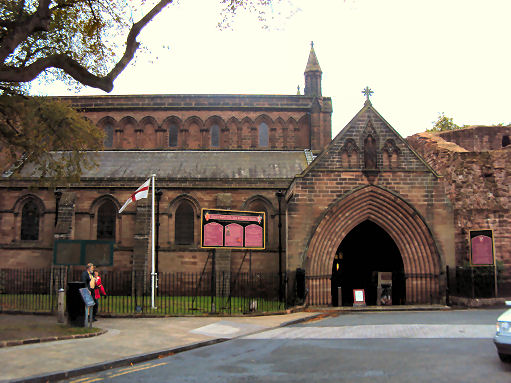
The building was enhanced in 907 by Ethelfleda, known as 'the Lady of Mercia' and the daughter of the Saxon King Alfred the Great. King Edgar the Peaceful visited the church in 973 following his coronation at Bath, to receive the homage of his sub-kings, who legend has it, rowed him on the River Dee to the Church. Following the Dissolution of the Monasteries under Henry VIII, much of the eastern end of the church was demolished but parts of it still remain, a romantic, roofless ruin, standing to the east of the present building.
The year 1468 saw the dramatic collapse of the central tower. Again, in 1572 the northwest tower collapsed causing the destruction of the western bays of the nave. Restorations to the church took place in in 1859-66 and 1886-87 to the design of R. C. Hussey. During the course of repairs to the northwest tower in 1881 it collapsed again, on this occasion destroying the north porch. The porch was rebuilt in 1881-82 by the Victorian architect John Douglas. John Douglas also designed the northeast belfry tower in 1886.
The Nave
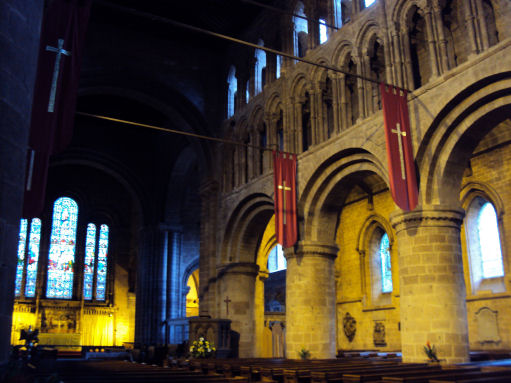
The red sandstone church exterior is mainly in the Early English due to the Victorian restorations, whilst much of the interior remains Norman. To the east stand ruined remains including parts of former chapels, abandoned in 1581 when St John's became a parish. St John's is one of the best examples in Britain of the transition from the Romanesque to Gothic styles of architecture. There is a four-bay nave, crossing and chancel, all Norman, and a Norman gallery in the chancel. A thirteenth century painting of Christ on one of the nave pillars was rediscovered when whitewash from Puritan times was removed in the nineteenth century.
Medieval knight's effigy
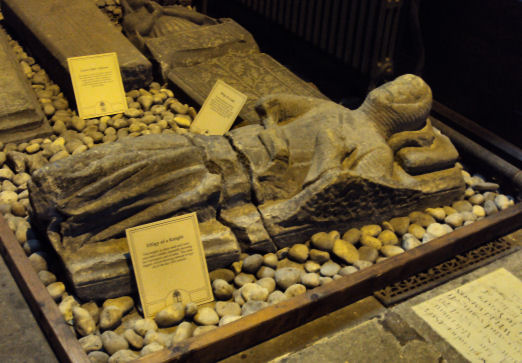
The church contains many interesting early effigies, unfortunately, all have been damaged, they include a late thirteenth century knight in armour, and a priest, three of these date back to the thirteenth and early fourteenth centuries. The church contains two fonts, one dating from the 15th century, the other from the Commonwealth period.
Saxon Crosses in the Nave
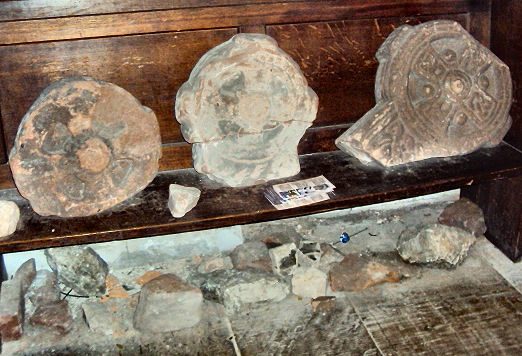
Some fine examples of Viking/Anglo-Saxon cross heads are displayed in the nave of the church. Dating from around the tenth century, they are reputedly from the workshop established in the quarry of St Johns by Irish-Norse traders who settled in Chester during the 10th Century. Similar crosses thought to have been from the same workshop have been found over a wide area. The cross heads were unearthed from the eastern area of St Johns during the 1870 restoration.
The great West Window dates to 1890. It shows numerous important episodes in the long history of Chester and St. John's. The church plate includes two damaged pewter chalices and a paten from the late 12th or early 13th centuries and a number of silver items from the seventeenth and eighteenth centuries.The impressive organ came from Westminster Abbey, where it was used for the coronation of Queen Victoria in 1838.
The Lady Chapel
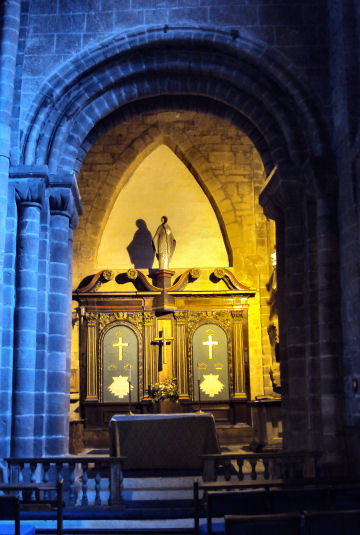
The Lady chapel at the south east corner of the building was created during restorations in 1925 when the then the Warburton chapel was extended. The chapel contains monuments to the Warburton family, including a notable late seventeenth century memorial to Diana Warburton (d. 1693).
The ruins of St. John's Church
